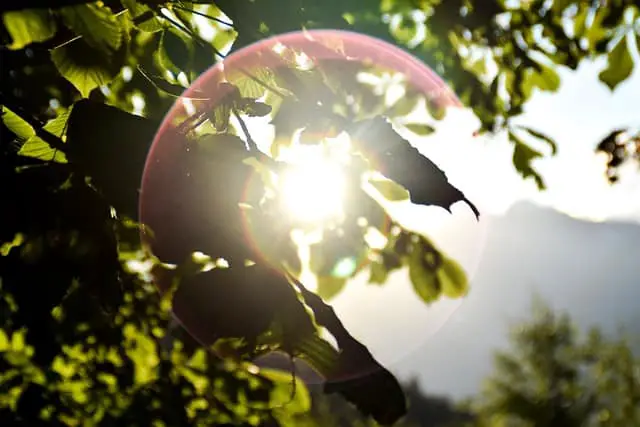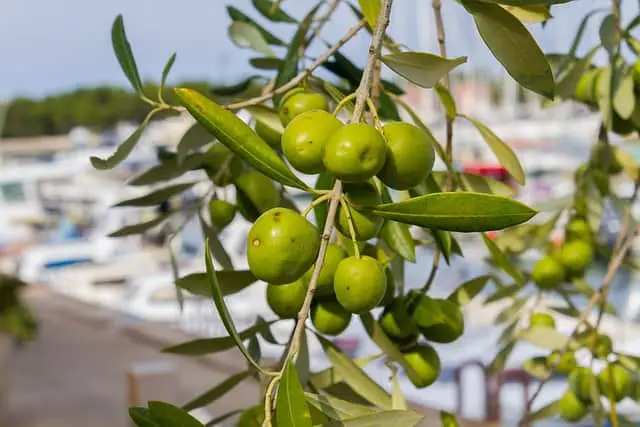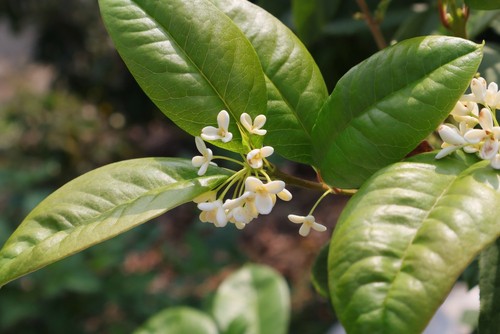Tea olive trees are popular ornamental plants that are known for their fragrant white flowers and glossy, dark green leaves. However, one common problem that tea olive tree owners face is the browning of their leaves. Brown tea olive leaves can be unsightly and may indicate an underlying issue that needs to be addressed.
Understanding the causes of tea olive leaves turning brown can help prevent and treat the issue. Overwatering, poor drainage, over-fertilization, pests, and diseases are some of the common culprits that can cause tea olive leaves to turn brown. Proper care and maintenance of tea olive trees are also crucial in preventing brown leaves.
Overall, tea olive leaves turning brown can be a sign of an underlying issue that needs to be addressed. By understanding the causes and taking preventative measures, tea olive tree owners can maintain healthy and beautiful trees.
In the following sections, we will delve deeper into the causes, prevention, and treatment of tea olive leaves turning brown.
Key Takeaways
- Brown tea olive leaves can be caused by a variety of factors such as overwatering, poor drainage, over-fertilization, pests, and diseases.
- Proper care and maintenance of tea olive trees are crucial in preventing brown leaves.
- Understanding the causes and taking preventative measures can help maintain healthy and beautiful tea olive trees.
Learn more about plant care from these other posts:
Understanding Tea Olive Leaves Turning Brown
Tea olives are evergreen shrubs that can grow up to 20 feet tall and 15 feet wide. They are popular for their fragrant white flowers and dark green leaves. However, tea olive leaves may turn brown due to various reasons, including environmental stress, pests, and diseases.
1. Environmental Stress

Tea olive leaves may turn brown due to environmental stress, such as drought, heat, or cold. When the soil is too dry, the leaves may wilt and turn brown. When the temperature is too high or too low, the leaves may also turn brown. In such cases, watering the plant and providing shade or shelter can help the plant recover.
2. Pests
Pests, such as spider mites, scale insects, and tea scale insects, can also cause tea olive leaves to turn brown. These pests suck the sap from the leaves, causing them to dry out and turn brown. In severe cases, the leaves may fall off. To control these pests, one can use insecticidal soap or horticultural oil.
3. Diseases
Tea olive leaves may also turn brown due to diseases, such as leaf spot, gray mold, or anthracnose. Leaf spot is characterized by tan or light brown spots with dark borders, and black flecks of fungus may appear in the center.
Gray mold spots are characterized by gray or brown spots with a fuzzy texture. Anthracnose is characterized by dark spots with a purple or red border. To control these diseases, one can use fungicides or prune the affected leaves.
Causes of Tea Olive Leaves Turning Brown
Tea olive, also known as sweet olive, is a beautiful evergreen shrub that produces fragrant flowers. However, tea olive leaves may turn brown, which can be a sign of an underlying issue. In this section, we will explore some of the most common causes of tea olive leaves turning brown.
1. Watering Issues
One of the most common reasons tea olive leaves turn brown is due to watering issues. Overwatering can lead to root rot, which can cause tea olive leaves to turn brown and fall off.
On the other hand, underwatering can also cause tea olive leaves to turn brown and dry out. It is essential to maintain a proper watering schedule for your tea olive plant.
2. Nutrient Deficiencies
Tea olive plants require a balanced mix of nutrients to thrive. A lack of nutrients, such as iron, potassium, nitrogen, magnesium, and sulfur, can cause tea olive leaves to turn brown. If you notice your tea olive leaves turning brown, it may be due to a lack of nutrients. Fertilizing your tea olive plant may help prevent nutrient deficiencies.
3. Pests and Diseases

Tea olive plants are susceptible to pests and diseases, which can cause tea olive leaves to turn brown. Common pests that can infest tea olive plants include aphids, scale insects, and ants.
These pests can cause honeydew to develop on tea olive leaves, which can lead to fungal growth and brown leaves. Tea olive plants can also be affected by diseases such as leaf spot, canker, and verticillium wilt.
4. Environmental Factors
Tea olive plants require specific environmental conditions to thrive. Drought, direct sunlight, and dry conditions can cause tea olive leaves to turn brown. Tea olive plants are drought-tolerant, but they still require adequate water to prevent brown leaves.
Additionally, tea olive plants require sufficient light, but too much direct sunlight can cause tea olive leaves to become sunburned and turn brown. Wind damage can also cause tea olive leaves to turn brown.
Prevention and Treatment
Tea olive leaves turning brown is a common problem that can be prevented and treated with proper care. This section will cover some of the best practices for preventing and treating brown leaves on tea olive plants.
1. Proper Watering and Drainage
Overwatering and poor drainage are some of the most common causes of tea olive leaves turning brown. To prevent this problem, it is important to water tea olive plants only when the soil is dry to the touch.
It is also important to ensure that the soil has good drainage to prevent water from accumulating around the roots. This can be achieved by using well-draining soil and adding a layer of gravel or sand at the bottom of the pot.
2. Nutrient Management
Tea olive plants require a balanced diet of nutrients to grow healthy and strong. To prevent brown leaves, it is important to provide your plants with proper nutrition. This can be achieved by using a balanced fertilizer that contains nitrogen, phosphorus, and potassium.
It is also important to test the soil pH to ensure that it is within the optimal range for tea olive plants.
3. Pest and Disease Control
Pests and diseases can also cause tea olive leaves to turn brown. To prevent this problem, it is important to keep your plants healthy and free from pests and diseases.
This can be achieved by regularly inspecting your plants for signs of infestation or disease and using appropriate treatments such as fungicides, neem oil, or other chemical treatments.
4. Environmental Adjustments

Tea olive plants require a specific environment to grow healthy and strong. To prevent brown leaves, it is important to ensure that your plants are in the right environment.
This can be achieved by providing your plants with the right amount of sunlight, avoiding direct sunlight during the hottest parts of the day, and protecting your plants from wind damage. It is also important to ensure that your plants are not drought-tolerant or suffering from insufficient light.
By following these best practices, you can prevent and treat brown leaves on tea olive plants. Remember to always monitor your plants and adjust your care as needed to ensure that they remain healthy and strong.
Care and Maintenance of Tea Olive
Tea olive (Osmanthus fragrans) is an evergreen shrub that produces fragrant flowers and glossy leaves. However, tea olive leaves may turn brown due to various reasons such as pests, diseases, or environmental factors. Proper care and maintenance can help prevent tea olive leaves from turning brown.
1. Pruning and Care
Pruning tea olive regularly can help maintain its shape and control its size. Prune tea olive in late winter or early spring before new growth appears. Remove any dead, diseased, or damaged branches. Cut back any long branches to promote bushier growth. Avoid pruning tea olive too hard as it may result in leaf loss or dieback.
Tea olive prefers well-draining soil and good drainage. Use sterile potting soil or compost to plant tea olive in a pot. Test the soil pH and adjust it to the optimal level between 6.0 and 7.0. Apply a layer of mulch around the base of the plant to help retain moisture and suppress weeds.
2. Soil and Potting
Tea olive prefers consistently moist soil but not waterlogged soil. Water tea olive deeply once a week during the growing season and reduce watering in winter. Allow the soil to dry out slightly between watering. Avoid overwatering tea olive as it may cause root rot.
3. Dealing with Common Pests
Tea olive may be susceptible to pests such as aphids, scale insects, and spider mites. Inspect tea olive regularly for any signs of infestation such as sticky honeydew or distorted leaves.
Use insecticidal soap or horticultural oil to control pests. Ants may also be attracted to honeydew and may protect pests from predators. Use sticky traps to control ants.
4. Optimal Growing Conditions
Tea olive prefers full sun to part shade and is drought-tolerant once established. However, insufficient light may cause tea olive leaves to turn brown. Avoid planting tea olive in direct sunlight during hot summer months. Provide shade or move tea olive to a cooler location during extreme heat.
Types of Tea Olive

Tea olive is a versatile plant that comes in different types. Each type of tea olive has its unique characteristics that make it suitable for different purposes. In this section, we will discuss the most common types of tea olive: Sweet Olive, Osmanthus Fragrans, Olive Tree, and Gardenias.
1. Sweet Olive
Sweet Olive, also known as Osmanthus Fragrans, is a popular type of tea olive that is native to China and Japan. It is a small evergreen tree or shrub that can grow up to 20 feet tall. Sweet Olive is known for its fragrant white flowers that bloom in the fall and winter, making it a popular choice for gardens and landscapes.
Sweet Olive is a versatile plant that can be used as a hedge, screen, or specimen plant. It is drought-tolerant and resilient, making it an excellent choice for areas with hot and dry climates. Sweet Olive is also easy to grow and maintain, making it a popular choice for novice gardeners.
2. Olive Tree
Olive Tree is another type of tea olive that is native to the Mediterranean region. It is an evergreen tree that can grow up to 30 feet tall. Olive Tree is known for its silvery-green leaves and small white flowers that bloom in the spring and summer.
Olive Tree is a drought-tolerant plant that is easy to grow and maintain. It is a versatile plant that can be used as a specimen plant, hedge, or screen. Olive Tree is also known for its edible fruit, which is used to produce olive oil.
3. Gardenias
Gardenias are a popular type of tea olive that is known for its fragrant white flowers. Gardenias are native to China and Japan and are often used in gardens and landscapes. They are a small evergreen shrub that can grow up to 6 feet tall.
Gardenias are drought-tolerant and versatile, making them an excellent choice for areas with hot and dry climates. They are also easy to grow and maintain, making them a popular choice for novice gardeners.
4. Osmanthus Fragrans
Osmanthus Fragrans, also known as Fragrant Tea Olive or Fragrant Olive, is a popular type of tea olive that is native to China and Japan. It is a small evergreen tree or shrub that can grow up to 20 feet tall.
Osmanthus Fragrans is known for its fragrant white flowers that bloom in the fall and winter. It is a versatile plant that can be used as a hedge, screen, or specimen plant.
Osmanthus Fragrans is drought-tolerant and resilient, making it an excellent choice for areas with hot and dry climates. It is also easy to grow and maintain, making it a popular choice for novice gardeners.
Frequently Asked Questions
What causes tea olive leaves to turn brown?
Tea olive leaves can turn brown due to a variety of reasons, including natural leaf shedding, environmental stress, pests, diseases, or improper care. It is important to identify the underlying cause to effectively treat and prevent the browning of tea olive leaves.
How can I prevent tea olive leaves from turning brown?
To prevent tea olive leaves from turning brown, it is crucial to provide the plant with optimal growing conditions, including well-draining soil, adequate sunlight, and regular watering.
Proper pruning, fertilization, and pest control can also help maintain the health and appearance of tea olive plants.
Are brown tea olive leaves a sign of disease?
Brown tea olive leaves can be a sign of disease, but not always. It is important to examine the leaves closely and look for other symptoms, such as spots, discoloration, or wilting. If disease is suspected, it is best to consult a professional for proper diagnosis and treatment.
What is the best way to care for tea olive plants?
The best way to care for tea olive plants is to provide them with optimal growing conditions, including well-draining soil, adequate sunlight, and regular watering. Proper pruning, fertilization, and pest control can also help maintain the health and appearance of tea olive plants.
Do tea olives lose their leaves in the fall?
Tea olives are evergreen shrubs and do not typically lose their leaves in the fall. However, they may shed some leaves throughout the year as part of their natural growth cycle.
Why are the leaves on my Osmanthus shrub turning brown?
The leaves on an Osmanthus shrub may turn brown due to a variety of reasons, including environmental stress, pests, diseases, or improper care. It is important to identify the underlying cause to effectively treat and prevent the browning of Osmanthus leaves.

Hey, I’m Lisa and I’ve been an avid gardener for over 30 years. I love writing, talking and living in the garden! Feel free to connect with me on my socials below


